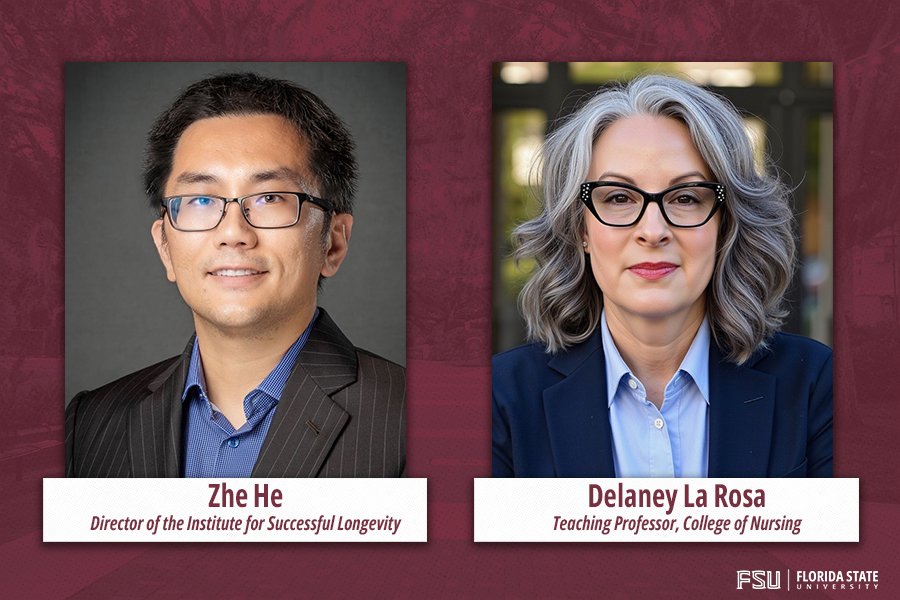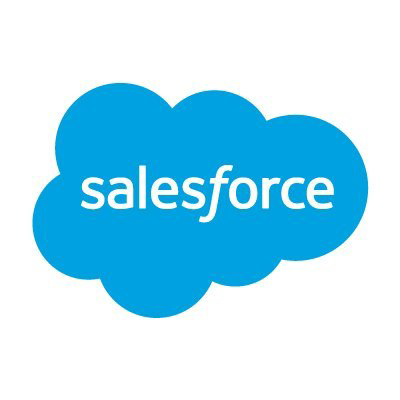AI Insights
FSU experts available to discuss the role of artificial intelligence in health care

On Sept. 3, the United States House Committee on Energy and Commerce Subcommittee on Health held a hearing on the critical issue of advancing American health care through artificial intelligence.
Championed by many organizations, including the American Medical Association, the use of AI in health care is seen as one of the new technology’s most important benefits. It is utilized in ways that improve patient health outcomes, provide surgical precision, enhance diagnostic accuracy and much more.
Florida State University’s Zhe He, a professor in the College of Communication and Information and director of the Institute for Successful Longevity, recently developed a study highlighting AI’s impact in diagnostic accuracy, personalized treatment plans, interpreting medical images, streamlining operations and supporting remote patient monitoring among many successful initiatives.
His research lies in the intersection of biomedical and health informatics, artificial intelligence, and big data analytics. He is an elected fellow of the International Academy of Health Sciences Informatics (IAHSI) and the American Medical Informatics Association (AMIA).
“AI has already reshaped health care in tangible ways,” He said of the new technology’s transformative impact. “We now use AI to analyze electronic health records, medical images, and even predict differential diagnosis, mortality and hospital readmissions. These tools don’t replace clinicians, but they extend their reach and help reduce diagnostic delays, personalize treatments and improve efficiency. Importantly, AI is also opening doors to rural communities by enabling new models of remote monitoring and telehealth support.”
Delaney La Rosa, teaching professor at the College of Nursing, is an educator and academic leader whose work bridges clinical practice, digital innovation, and equity-centered curriculum design. She is a nationally recognized researcher and speaker on the ethical application of AI in nursing and education.
La Rosa has expertise in health care informatics, the use of AI in health care and the integration of AI in health care education. She explores how emerging technologies can be aligned with human-centered, accessible approaches to teaching and care.
“The area that AI is transforming health care most is in the preemptive area,” La Rosa said. “We’re finding out when a patient is about to decline or when a patient is about to go septic. We are looking through data across populations.”
“In rural primary care clinics, we know that these areas are stretched for staffing,” she added. “What these AI tools can do is they can use the data across that primary office’s entire population of patients and, using the training that it was trained with, can identify patients who are most likely to develop conditions or who are most likely to benefit from preventive programs.”
Media interested in learning about the multitude of ways AI is advancing health care can reach out to Zhe He at zhe@fsu.edu and Delaney La Rosa at dwl25b@fsu.edu.
Zhe He, professor in the College of Communication and Information and director of the Institute for Successful Longevity
1. We’ve seen enormous impacts already, but what other areas in health care do you feel AI can potentially change in the future?
I see three big frontiers:
Patient engagement: Tools that help people better understand their lab results, medications and care plans can empower them to make more informed choices.
Aging and chronic disease management: With our aging population, AI can play a vital role in predicting risks, supporting caregivers and promoting adherence to treatment.
Clinical research and drug discovery: AI is accelerating trial recruitment, optimizing study design and uncovering new therapeutic targets. Over the next decade, I think these areas will be transformed just as radiology has been over the past decade.
2. How has AI impacted the work you do?
My research focuses on making health information more accessible and actionable with informatics and AI. For example, my team is developing LabGenie, a GenAI-powered system that helps older adults and caregivers interpret lab test results and generate personalized questions for their clinicians. We are also developing AI-based systems to promote adherence to cognitive training, support post-transplant care and identify strategies for HIV prevention and management for young adults. Across all of this work, AI is not an end in itself—it’s a means to improve patient engagement, adherence to treatment and shared decision making.
Delaney La Rosa, teaching professor, College of Nursing
1. What kinds of advancements has the College of Nursing made as it invests heavily in AI?
From my personal perspective, the biggest contribution we are making for AI is two-fold: The first is we lead the nation. We are the first with a degree in health care AI for our students. There is a big juggernaut out there — we must quickly learn how to use AI and then we must quickly teach our students how to use AI and use it ethically, which is another big issue, and then graduate workforce-ready individuals. Not only do we have our degree program, but we are about to release a microcredential where we develop six total courses for a certificate program called Nursing Essentials of Responsible AI. We are also beginning our postgraduate certificate. We’re leading the nation in graduating. We’re getting workforce-ready students.
The second thing is we are leading an AI consortium and having our first launch summit that’s happening in Orlando on Sept. 17 – the Nursing and AI Innovation Consortium Launch Summit. And what that means is that we have leaders from across industries — research, practice, higher education — who are coming together, and we’re going to sit at the table and determine where we want to go next in AI.
2. How critical is the role you play in terms of AI education?
I think the most important thing to me is our foundational essentials course. This course gives you a good grounding in the things that are not going to really change much in AI. It’s that base understanding so we can know the language. One thing that nurses are great at is being able to assess the data and information that’s coming out to see if it’s quality and it’s scientific. But you can’t do that in AI unless you have a basic understanding of how it works.
AI Insights
Oracle’s AI strategy to take on Epic – statnews.com
AI Insights
Building industrial AI from the inside out for a stronger digital core

A manufacturer was running an AI training workload on a cobbled together system of GPUs, storage, and switching infrastructure, believing it had all the necessary tech to achieve its goals. But the company had put little thought into how the components actually worked together.
Problems surfaced quickly. Training cycles dragged on for days instead of hours. Expensive hardware sat idle. And engineering teams began to wonder whether their AI investment would ever pay off.
This experience isn’t unique. As AI becomes a critical element of industrial operations worldwide, many organizations are discovering a counterintuitive truth: the biggest breakthroughs come not from piling on more GPUs or larger models, but from carefully engineering the entire infrastructure to work as a single, integrated system.
Engineering for outcomes
What became of that cobbled-together system? When it was properly engineered to balance compute, networking, and storage, the improvement was quick and dramatic, explains Jason Hardy, CTO of AI for Hitachi Vantara: a 20x boost in output and a matching reduction in “wall clock time,” the actual time it takes to complete AI training cycles.
“The infrastructure must be engineered so you understand exactly what each component delivers,” Hardy explains. “You want to know how the GPU drives specific outcomes, how that impacts the data requirements, and demands on throughput and bandwidth.”
Getting systems to run that smoothly means confronting a challenge most organizations would rather avoid: aging infrastructure.
Hardy points to a semiconductor manufacturer whose systems performed fine—until AI entered the picture. “As soon as they threw AI on top of it, just reading the data out of those systems brought everything to a halt,” he says.
This scenario reflects a widespread industrial reality. Manufacturing environments often rely on systems that have been running reliably for years, even decades. “The only places I can think of where Windows 95 still exists and is used daily are in manufacturing,” Hardy says. “These lines have been operational for decades.”
That longevity now collides with new demands: industrial AI requires exponentially more data throughput than traditional enterprise applications, and legacy systems simply can’t keep up. The challenge creates a fundamental mismatch between aspirations and capabilities.
“We have this transformational outcome we want to pursue,” Hardy explains. “We have these laggard technologies that were good enough before, but now we need a little bit more from them.”
From real-time requirements to sovereign AI
In industrial AI, performance demands often make enterprise workloads look leisurely. Hardy describes a visual inspection system for a manufacturer in Asia that relied entirely on real-time image analysis for quality and cost control. “They wanted AI for quality control and to improve yield, while also controlling costs,” he says.
The AI had to process high-resolution images at production speed—no delays, no cloud roundtrips. The system doesn’t just flag defects but traces them to the upstream machine causing the problem, enabling immediate repairs. It can also salvage partially damaged products by dynamically rerouting them for alternate uses, reducing waste while maintaining yield.
All of this happens in real-time while collecting telemetry to continuously retrain the models, turning what had been a waste problem into an optimization advantage that improves over time.
Using the cloud exclusively introduces delays that make near-real-time processing impossible, Hardy says. The latency from sending data to remote servers and waiting for results back can’t meet manufacturing’s millisecond requirements.
Hardy advocates a hybrid approach: design infrastructure with an on-premises mindset for mission-critical, real-time tasks, and leverage the cloud for burst capacity, development, and non-latency-sensitive cloud-friendly workloads. The approach also serves the rising need for sovereign AI solutions. Sovereign AI ensures that mission-critical AI systems and data remain within national borders for regulatory and cultural compliance. As Hardy says, countries like Saudi Arabia are investing heavily in bringing AI assets in-country to maintain sovereignty, while India is building language- and culture-specific models to accurately reflect its thousands of spoken languages and microcultures.
AI infrastructure is more than muscle
Such high-level performance requires more than just fast hardware. It calls for an engineering mindset that starts with the desired outcome and data sources. As Hardy puts it, “You should step back and not just say, ‘You need a million dollars’ worth of GPUs.’” He notes that sometimes, “85% readiness is sufficient,” emphasizing practicality over perfection.
From there, the emphasis shifts to disciplined, cost-conscious design. “Think about it this way,” Hardy says. “If an AI project were coming out of your own budget, how much would you be willing to spend to solve the problem? Then engineer based on that realistic assessment.”
This mindset forces discipline and optimization. The approach works because it considers both the industrial side (operational requirements) and the IT side (technical optimization)—a combination he says is rare.
Hardy’s observations align with recent academic research on hybrid computing architectures in industrial settings. A 2024 study in the Journal of Technology, Informatics and Engineering1 found that engineered CPU/GPU systems achieved 88.3% accuracy while using less energy than GPU-only setups, confirming the benefits of an engineering approach.
The financial impact of getting infrastructure wrong can be substantial. Hardy notes that organizations have traditionally overspend on GPU resources that sit idle much of the time, while missing the performance gains that come from proper system engineering. “The traditional approach of buying a pool of GPU resources brings a lot of waste,” Hardy says. “The infrastructure-first approach eliminates this inefficiency while delivering superior results.”
Avoiding mission-critical mistakes
In industrial AI, mistakes can be catastrophic—faulty rail switches, conveyors without emergency shutoffs, or failing equipment can injure people or stop production. “We have an ethical bias to ensure everything we do in the industrial complex is 100% accurate—every decision has critical stakes,” Hardy says.
This commitment shapes Hitachi’s approach: redundant systems, fail-safes, and cautious rollouts ensure reliability takes precedence over speed. “It does not move at the speed of light for a reason,” Hardy explains.
The stakes help explain why Hardy takes a pragmatic view of AI project success rates. “Though 80-90% of AI projects never go to production, the ones that do can justify the entire effort,” he says. “Not doing anything is not an option. We have to move forward and innovate.”
For more on engineering systems for balanced and optimum AI performance, see AI Analytics Platform | Hitachi IQ
Jason Hardy is CTO of AI for Hitachi Vantara, a company specializing in data-driven AI solutions. The company’s Hitachi iQ platform, a scalable and high-performance turn-key solution, plays a critical role in enabling infrastructure that balances compute, networking, and storage to meet the demanding needs of enterprise and industrial AI.
AI Insights
A Platform Leader’s Path to Sustained Dominance

This article first appeared on GuruFocus.
Salesforce (NYSE: CRM) offers a compelling long-term opportunity due to its leadership in the customer relationship management (NYSE:CRM) market, expanding AI integration, and growing addressable market. because of its continuous leading position in the customer relationship management (NYSE:CRM) market, the fast-growing adoption of artificial intelligence, and rapidly increasing the total addressable market. The business model that the company provides allows subscriptions and grants profits that are predictable, moreover, the platform-based approach increases the switching costs and provides opportunities to expand within the existing client bases. Thus, theThe business model enables high visibility into recurring revenue and long-term client retention.
Standing at the forefront of the global CRM market, Salesforce has captured nearly a quarter (23%) of the market share, leaving behind formidable adversaries like Microsoft, Oracle, and SAP. The position of being number one provides Salesforce with a multilayer competitive fortifications; thus, it builds a strong economic moat.
Network Effects and Ecosystem Dominance: There are over 4,000 applications on the AppExchange belonging to the Salesforce ecosystem, reinforcing its self-expanding cycle where developers attract customers, and vice versa. This network effect, which grows stronger with the addition of new applications thus the ecosystem expands, creates a barrier to entry that competitors find it almost impossible to duplicate. Independent software vendors (ISVs) devote a large amount of time and energy in creating applications that work with Salesforce, which in turn, makes the customers think that if they switch to another platform they would be missing out on the benefits of the whole partner network.
Data Network Effects: The greater the number of customers availing of Salesforce services, the larger is the amount of the data which is being accumulated by the platform on customer interactions across different sectors and applications. This data facilitates the enhancement of AI models, predictive analytics, and benchmarking capabilities; thus, the platform continues to generate value that compounds over the years and is not easily reproduced by new entrants.
Salesforce’s artificial intelligence strategy is a key component not just because it adds features, Salealos because sforce’s artificial intelligence strategy enhances its platform differentiation and supports operational leverage.. The company introduces the next generation of AI technology and improves the algorithmic base inspiring the organizations to work different with the which they produce and hold about their own customer data.
-

 Business2 weeks ago
Business2 weeks agoThe Guardian view on Trump and the Fed: independence is no substitute for accountability | Editorial
-
Tools & Platforms4 weeks ago
Building Trust in Military AI Starts with Opening the Black Box – War on the Rocks
-

 Ethics & Policy1 month ago
Ethics & Policy1 month agoSDAIA Supports Saudi Arabia’s Leadership in Shaping Global AI Ethics, Policy, and Research – وكالة الأنباء السعودية
-

 Events & Conferences4 months ago
Events & Conferences4 months agoJourney to 1000 models: Scaling Instagram’s recommendation system
-

 Jobs & Careers2 months ago
Jobs & Careers2 months agoMumbai-based Perplexity Alternative Has 60k+ Users Without Funding
-

 Education2 months ago
Education2 months agoVEX Robotics launches AI-powered classroom robotics system
-

 Podcasts & Talks2 months ago
Podcasts & Talks2 months agoHappy 4th of July! 🎆 Made with Veo 3 in Gemini
-

 Education2 months ago
Education2 months agoMacron says UK and France have duty to tackle illegal migration ‘with humanity, solidarity and firmness’ – UK politics live | Politics
-

 Funding & Business2 months ago
Funding & Business2 months agoKayak and Expedia race to build AI travel agents that turn social posts into itineraries
-

 Podcasts & Talks2 months ago
Podcasts & Talks2 months agoOpenAI 🤝 @teamganassi


